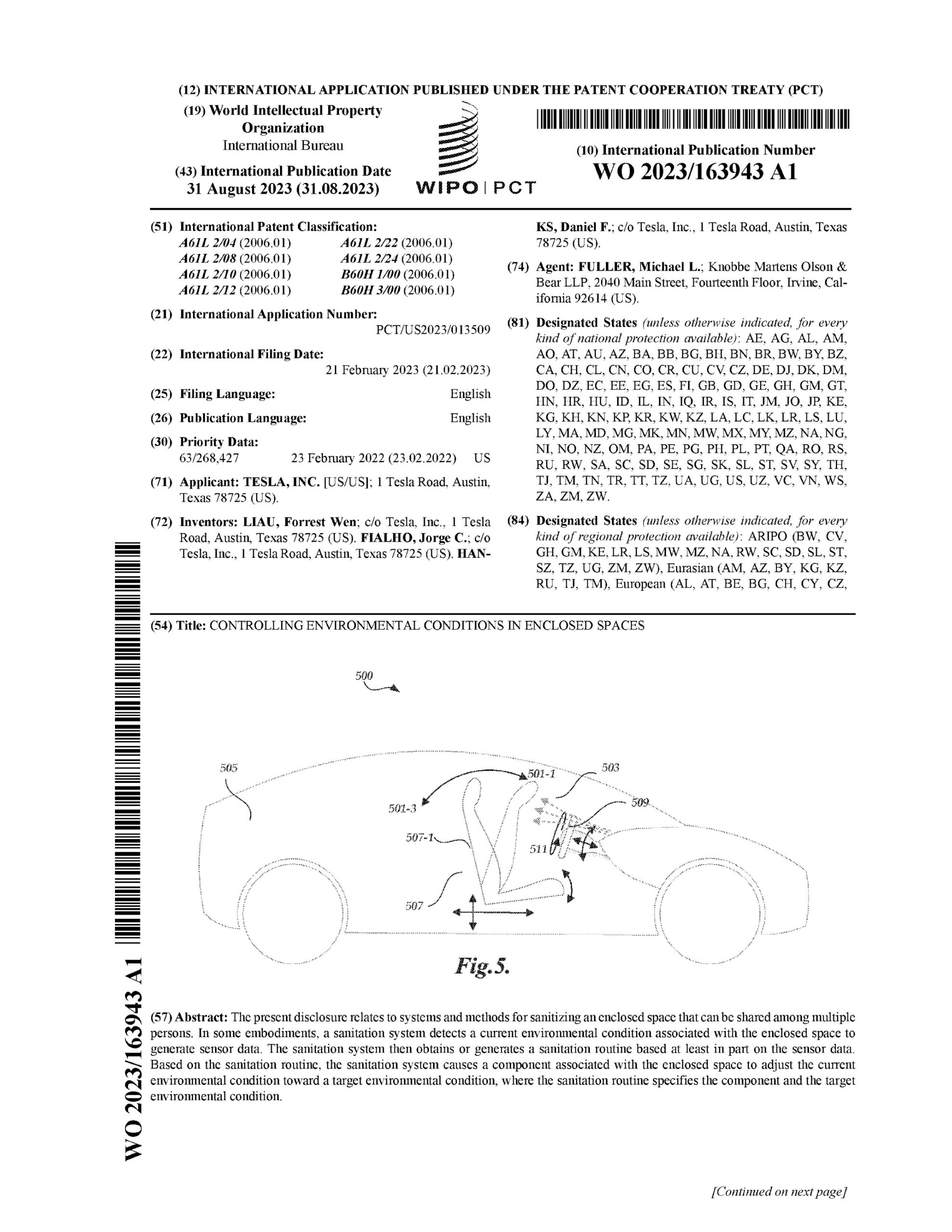
Sign up for daily news updates from CleanTechnica on email. Or follow us on Google News!
Last Updated on: 19th February 2025, 08:03 am
Recent freezes and massive cuts in government spending threaten our food, water, and health as they open up trillions of dollars in tax breaks for corporations and billionaires. Basic government functions are in jeopardy.
Let’s look at a list of important areas that are now likely to lose federal government regulation and which threaten our food, water, and health — if they haven’t done so already. Everyday is a whirlwind with the Trump administration.
Is supporting the environment radical? The Environmental Protection Agency (EPA) has protected the environment and human health for nearly 55 years, including by regulating air pollution, banning dangerous chemicals like DDT, and working to reduce carbon emissions. Trump has appointed chemical and oil industry insiders to the agency, fired every scientist on two of the EPA’s most influential science advisory panels, and seems poised to attempt mass firings of EPA staff. Trump’s appointed head of the EPA, Lee Zeldin, is now trying to eviscerate $20 billion in grants.
Food safety inspections at risk: The administration is slashing the number of federal staff who keep our food safe. Inspectors are already overworked and understaffed. Foodborne illnesses hospitalize 100,000 people and cause 3,000 deaths each year in the US. With more cuts to inspections, more preventable deaths may occur, as chronicled by the non-profit advocacy group Food & Water Watch.
Testing water supplies: Climate change, population growth, aging infrastructure, and urbanization are important variabilities in water supply. Over 7 million waterborne illnesses occur every year in the US. Water users must rely on new safe water sources, so when cleantech innovators deploy new treatment technologies, the public benefits. These water technologies become highly commoditized and cost effective with time, and associated federal dollars fund water infrastructure projects that keep our water clean and safe. Federal funding cuts to projects like stormwater and treatment plant repairs and upgrades threaten our food, water, and health systems.
H5N1 Avian Influenza: Our health systems may no longer have the resources to respond to a bird flu epidemic. The Animal and Plant Health Inspection Service (APHIS) protects the health of US agriculture and natural resources against pests and diseases. That includes H5N1 Avian Influenza, or bird flu, which is spreading rapidly among poultry flocks, dairy herds, and now humans. My cousin’s family owns the Long Island duck farm that’s been shuttered due to a bird flu outbreak. So far, we’ve seen more than 65 recorded human cases and one death.
US Senator Tammy Baldwin (D-WI) called on President Trump this week “to quickly develop a plan to contain the avian flu outbreak that is devastating the nation’s poultry flocks and dairy herds and driving egg costs to reach record highs.” Baldwin’s letter follows the US Department of Health and Human Services (HHS) refusing to provide updated information to the public and the Centers for Disease Control (CDC) failing to publish the Morbidity and Mortality Weekly Report (MMWR) for the first time in decades due to the pause on all public health communications.
Food for impoverished children: Lawmakers want to slash trillions of dollars for the Supplemental Nutrition Assistance Program (SNAP), which serves 40 million people per month — the House has proposed $230 billion in cuts to food assistance and at least $150 billion specifically from SNAP. Those impacted will include the more than 10 million children in the US currently living in poverty. These Americans rely on these essential benefits to feed their families and now may face even greater threats of rising food costs as conservative Republican lawmakers in Congress and the White House formulate their legislative agenda, according to the Center for American Progress.
Grocers checks-and-balances: The Federal Trade Commission has stopped corporate abuses by enforcing civil antitrust law and consumer protection. Last year, the FTC successfully blocked a megamerger between grocery giants Kroger and Albertsons. Cuts to the agency will only benefit large corporations, leading to higher prices and even more corporate control over our food. Proposed programs to enhance truth in food labeling, regulate food pricing digitalization, or reining in fast food will get little more than laughs from the pro-billionaire administration.
Toxic substances may go unabatted: Trump 1.0 rollbacks included controls on toxic substances known to have catastrophic health impacts, like lead, mercury, arsenic, and even asbestos. Projects to remove these toxic chemicals from communities are uncertain. Toxic cleanup experts say the Trump administration could make it harder for hazardous sites to get designated, create a backlog, reduce program funding, and loosen contamination standards. The Trump administration supports a broader Republican push to speed up an approval process they say has held up innovation and economic growth.
Food as stabilizer when convenient: As Frank Morris of NPR member station KCUR reports, the attempt to close USAID has sparked legislation in Kansas. That’s because the towering white grain elevators holding almost $5 million worth of grain sorghum, or milo, have no buyers. In December, Food for Peace was the last buyer. Without that organization, these grains have no market.
Food for Peace was established with dual purposes in mind: put extra US grain to good use and keep farmers in business. A Kansas Republican president, Dwight Eisenhower, signed it into law in 1954. Now Kansas Senator Jerry Moran has introduced the legislation resurrecting the program and folding it into the Department of Agriculture. Food for Peace typically buys about $2 billion worth of American milo, wheat, rice and lentils every year and distributes that food to countries in need. With the Trump halt on USAID funds, nearly half a billion dollars worth of food assistance was suddenly stranded in ports. US farmers export about $150 billion of food annually, and, while Food for Peace was a relatively small slice of that market, it was an important one.
Toxic PFAS: Per- and polyfluoroalkyl substances — known as PFAS — are widely used, long lasting chemicals, components of which break down very slowly over time. Because of their widespread use and their persistence in the environment, many PFAS are found in the blood of people and animals all over the world and are present at low levels in a variety of food products and in the environment. PFAS are found in water, air, fish, and soil at locations across the nation.
Amid a flurry of actions curtailing Biden’s environmental policies, the Trump administration withdrew a plan to set limits on toxic PFAS chemicals in industrial wastewater. The draft rule, which the US Environmental Protection Agency (EPA) sent to the White House for review in June, was seen as a precedent-setting move by reducing allowable discharges of per- and polyfluoroalkyl substances (PFAS), a class of chemicals that have been linked to an array of health problems.
Keep reading. Unfortunately, it seems likely the Trump administration will threaten our food, water, and health even more over the coming weeks and months.
Featured image: “children eating” by Franklin Park Library (CC BY 2.0)
Chip in a few dollars a month to help support independent cleantech coverage that helps to accelerate the cleantech revolution!
Have a tip for CleanTechnica? Want to advertise? Want to suggest a guest for our CleanTech Talk podcast? Contact us here.
Sign up for our daily newsletter for 15 new cleantech stories a day. Or sign up for our weekly one if daily is too frequent.
CleanTechnica uses affiliate links. See our policy here.
CleanTechnica’s Comment Policy




